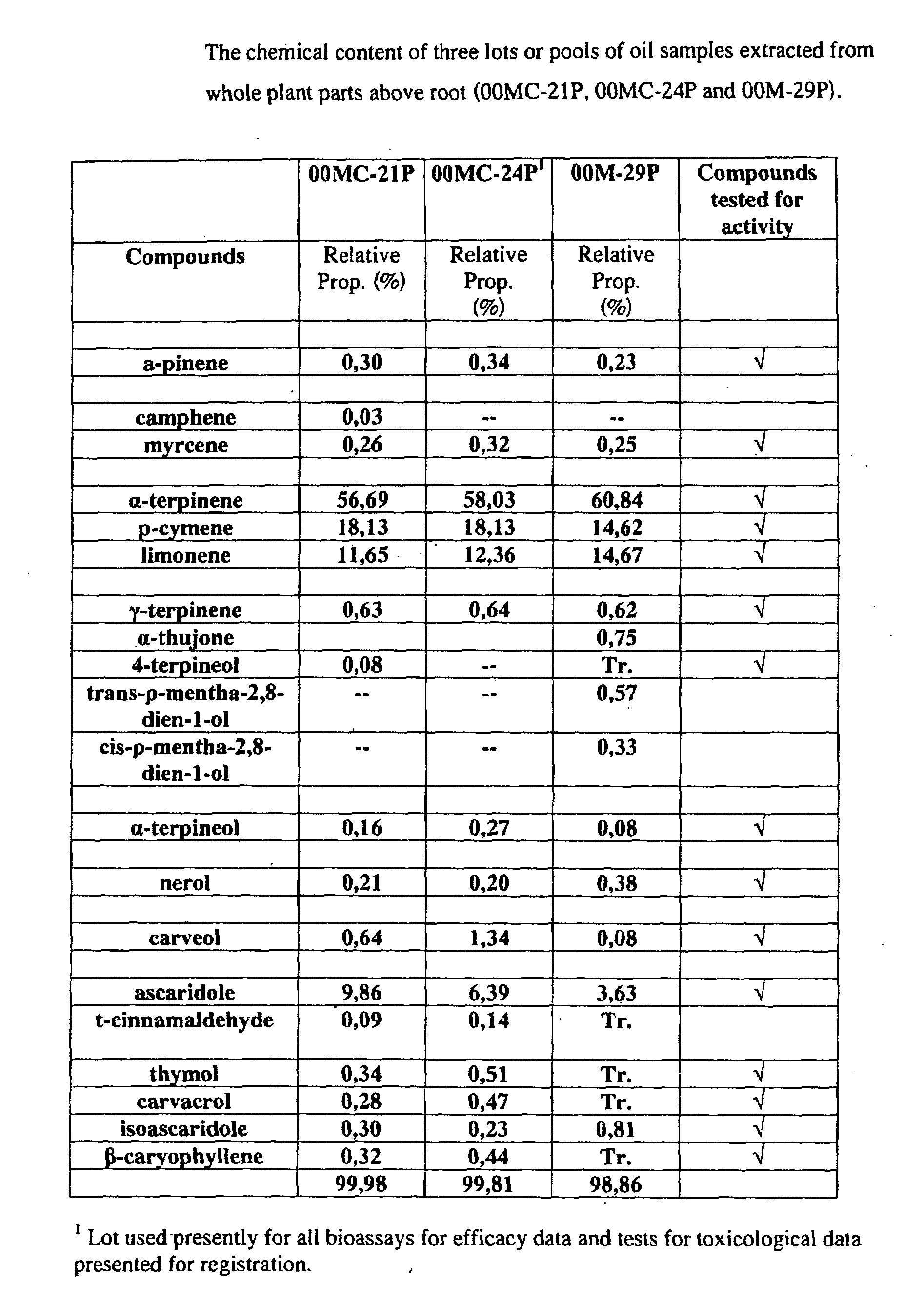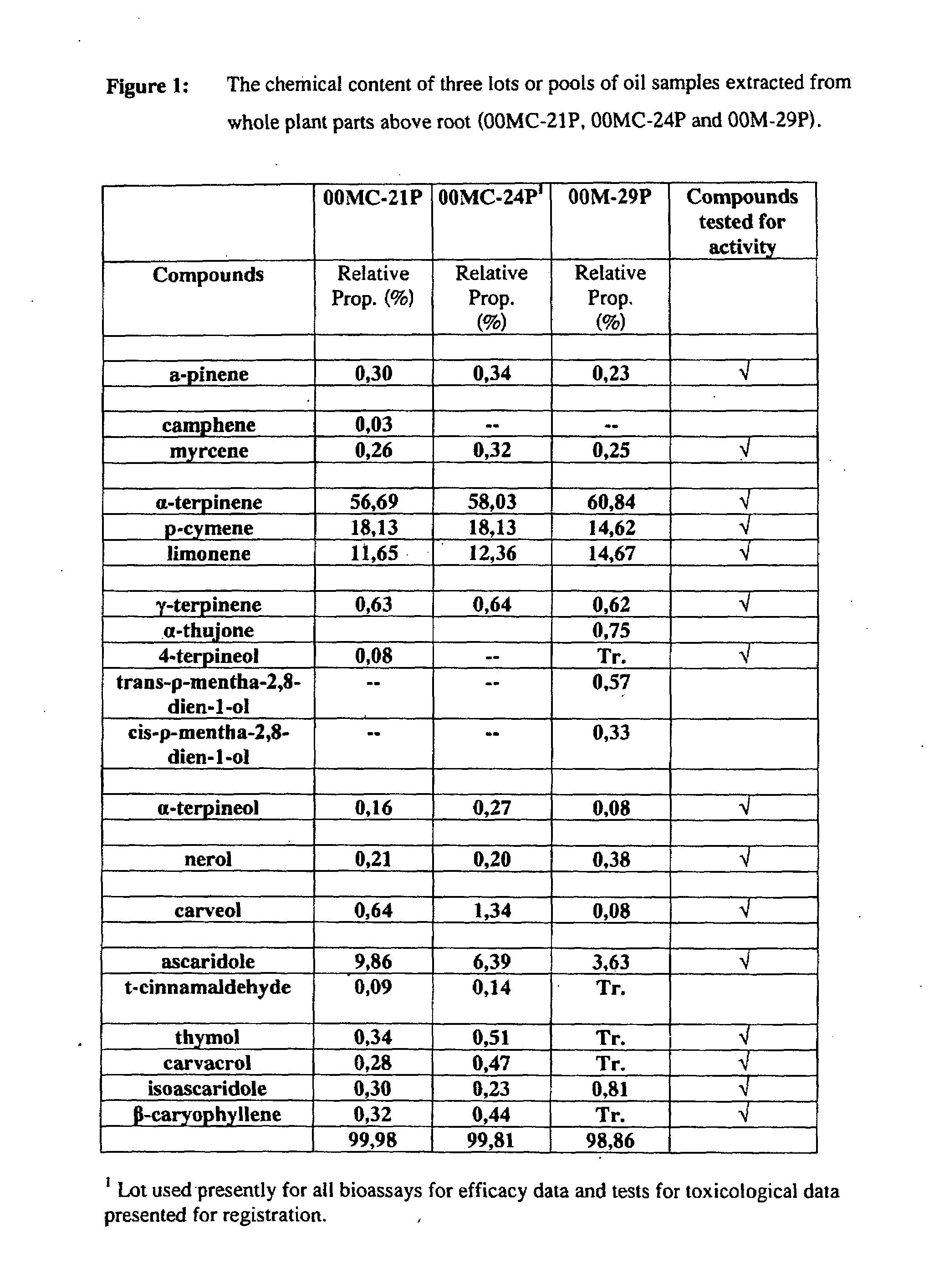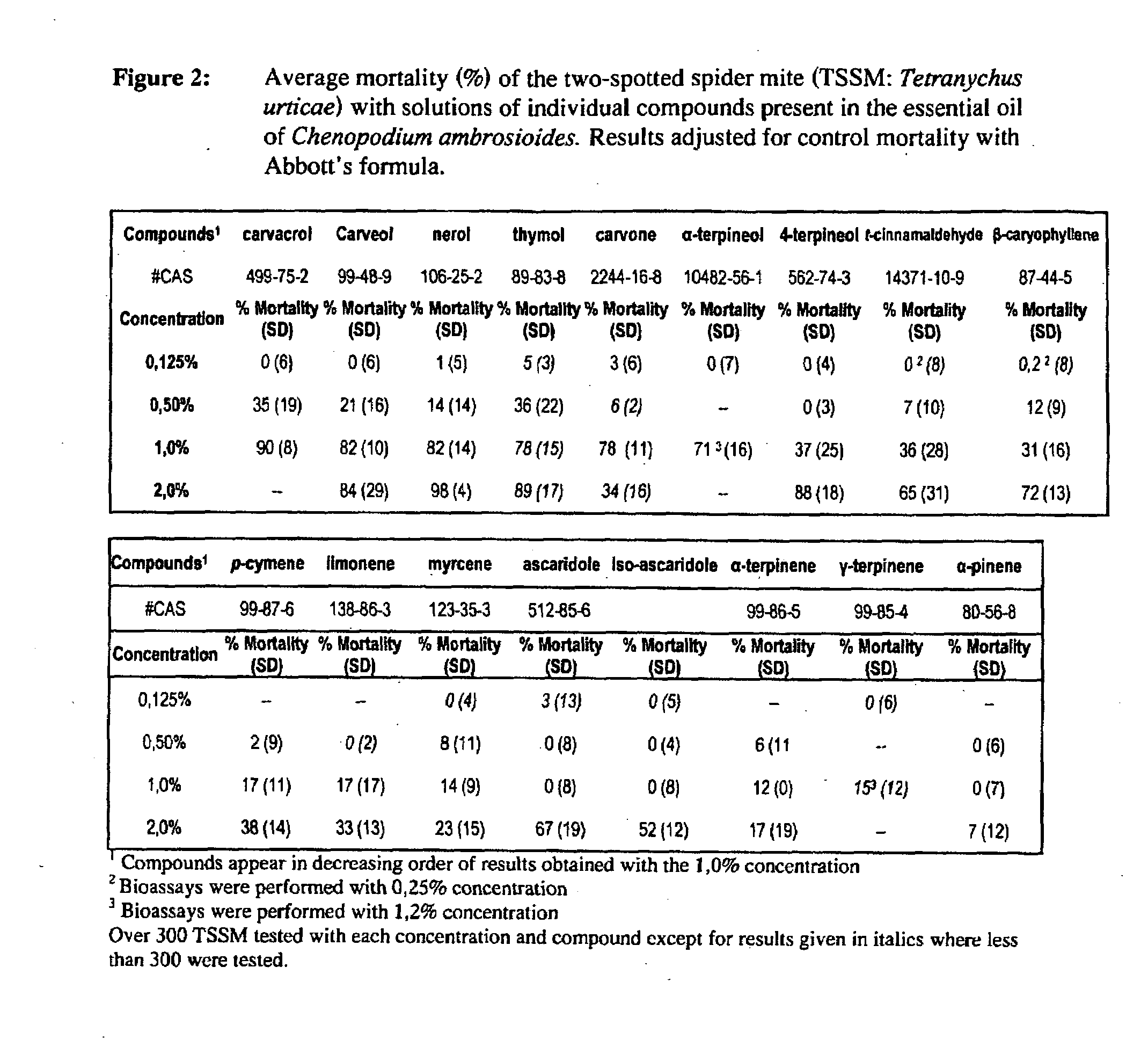Extracts derived from chenopodium plants and uses thereof
a technology of chenopodium plants and extracts, applied in the field of pesticides, can solve the problems of pest management programs, not meeting the guidelines developed, and affecting the environment,
- Summary
- Abstract
- Description
- Claims
- Application Information
AI Technical Summary
Benefits of technology
Problems solved by technology
Method used
Image
Examples
example i
Phytochemical Profile of an Essential Oil Extract Derived from Chenopodium ambrosioides
[0141]Whole plants of C. ambrosioides were harvested. Plant material used for extraction purposes comprised the whole plant above root. Essential oil extracts were extracted from the plant material by steam distillation, i.e., distillation in water (DW) and / or direct steam distillation (DSD).
[0142]Distillation in water was carried out in a 380 L distillator with a capacity for processing ca. 20 kg of plant material. During the process of DW, plant material was completely immersed in an appropriate volume of water which was then brought to a boil by the application of heat with a steam coil located at the base of the still body. In DSD, the plant material was supported within the still body and packed uniformly and loosely to provide for the smooth passage of steam through it. Steam was produced by an external generator and allowed to diffuse through the plant material from the bottom of the tank....
example ii
Determination of the Active Constituents of the Essential Oil-Extract
[0145]Extensive testing was done in order to determine the active constituents of the essential oil extract. All compounds present in the oil were tested except for trans-ρ-mentha-2,8-dien-1-ol and cis-ρ-mentha-2,8-dien-1-ol because they were unavailable. All compounds tested were obtained commercially (Sigma-Aldrich) except for ascaridole and iso-ascaridole that were isolated from a sample of our extract by Laboratories LaSève, Chicoutimi Qc.
Acaricidal Activity
[0146]Tests with the Two-Spotted Spider Mite (TSSM: Tetranychus urticae)
[0147]To test acaricidal activity, thirty adult female mites were placed on their dorsum with a camel hair brush on a double-sided sticking tape glued to a 9 cm Petri dish. Three dishes were prepared for each concentration of each compound tested and the control (e.g., water) for a total of 90 mites per treatment per treatment day.
[0148]One (1) ml of each preparation and of microfiltered...
example iii
Ready-to-Use Acaricidal Formulations
[0158]A ready-to-use (RTU) sprayable insecticidal formulation having as the active ingredient an extract of Chenopodium was prepared. In one embodiment, this formulation contains between 0.125% and 10% (by volume) of the essential oil extract, an emulsifier, a spreader and sticking agent, and a carrier.
[0159]Examples of basic RTU formulations are as follows.
IngredientAmount (%)Amount (%)Amount (%)Essential oil1.001.001.00extractRodacal IPAM0.500.830.83Igepal CA-630—0.50—Macol NP 9.5——0.50Water98.597.6797.67
[0160]Examples of formulations with added polymers for added residual effect are as follows.
IngredientAmount (%)Amount (%)Amount (%)Essential oil extract1.001.001.00Rhodacal IPAM0.830.830.83Igepal CA-6300.500.500.50Carboset 514H2.00——Pemulen TR2—0.05—Schercoat P110——5.00Propylene glycol—2.00—Water95.6795.6292.67
PUM
| Property | Measurement | Unit |
|---|---|---|
| humidity | aaaaa | aaaaa |
| humidity | aaaaa | aaaaa |
| humidity | aaaaa | aaaaa |
Abstract
Description
Claims
Application Information
 Login to View More
Login to View More - R&D
- Intellectual Property
- Life Sciences
- Materials
- Tech Scout
- Unparalleled Data Quality
- Higher Quality Content
- 60% Fewer Hallucinations
Browse by: Latest US Patents, China's latest patents, Technical Efficacy Thesaurus, Application Domain, Technology Topic, Popular Technical Reports.
© 2025 PatSnap. All rights reserved.Legal|Privacy policy|Modern Slavery Act Transparency Statement|Sitemap|About US| Contact US: help@patsnap.com



